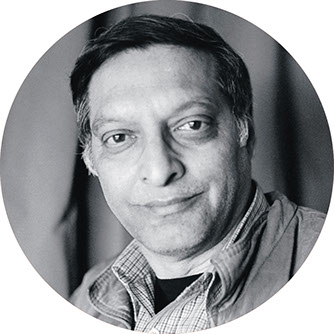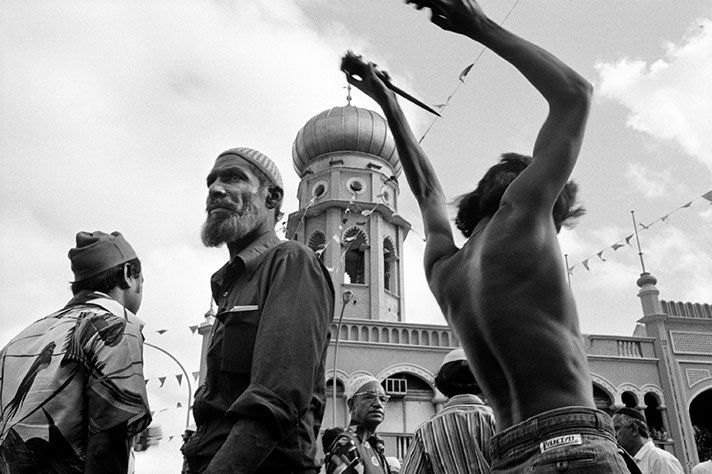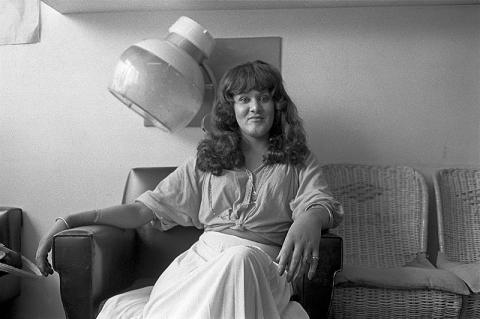 Small World
Small World
The work of activist photographer Omar Badsha has been central to the photographic life of South Africa. I spoke to him about the cultural and political life of South Africa.
Omar Badsha has lived an extraordinarily productive life. The overused phrase “renaissance man” barely begins to describe the scope of his activities over the last forty years. A self-taught artist and photographer, Badsha is also a cultural and political activist, a former trade union leader and an historian. All these things flow together, however, and from the beginnings in the 1960s when Badsha was at high school, his political activism and his artistic output have been two sides of the same coin
In the ’70s, he was part of a small group of people who were instrumental in reviving the progressive trade union movement in South Africa. He was involved in a precursor the Council of South Africa Trade Unions (Cosatu), and in 1974 became the secretary of the Chemical Workers Industrial Union. In the ’80s he worked as the photographic coordinator for the Carnegie Inquiry into Poverty and Development. During this period, he also established both the Centre for Documentary Photography at the University of Cape Town, and the influential photographer’s collective Afrapix with Paul Weinberg.
And yet his own work as a photographer has had a substantial impact on the cultural and political life of South Africa. He has been critically acclaimed as a documentary photographer, exhibiting around the country and the world. His work has won him a string of awards and been published in series of books, ranging from Letter to Farzanah in 1976 (which was banned at the time) to Imperial Ghetto in 2002. He currently lives in Pretoria and is the founder and director of SA History online, one of the largest websites to cover local history and culture.
His exhibition currently on show at the Durban Art Gallery, A World of Small Things reflects the work of a photographer whose content is both an extension of his life’s work, and a portrait of communities around the country and around the world. From casually intimate snaps of the life and times of Grey Street to a chronicle of the trade union and non-racism movements in South Africa, to explorations of the hippy community in Christiana outside Copenhagen and the communities in Gujarat, Badsha’s work is a testament to the perseverance and determination of the many communities around the world that exist on the global margins of a small planet. In the process, he fundamentally redefines notions of centre and periphery.
I spoke to him about just a few of the issues that are raised in the extensive retrospective of his work on the walls of the Durban Art Gallery.
Peter Machen: Since I first arrived in Durban in 1989, Grey Streets and its adjacent streets and alleys have been my favourite part of the city. Part of me has grown up in those streets, and continues to do so on an almost daily basis. So it is doubly fascinating for me to see those same streets occupied by another reality that is nonetheless linked to my own. I’m interested on your thoughts and feelings on the names changes to the streets that are mentioned every now and then, but which never seem to come to pass.
Omar Badsha: Grey Street, from its earliest days, was a very mixed community. The bottom section was changed to Broad Street after whites objected. The African markets, businesses, trade union and political offices were very much part of Grey Street – but this all began changing after the 1950s. I have no problem with the proposed name changes. They are a necessary part of addressing the cultural biases of our past.
PM: Do you think that the limits imposed on South African photographers during the decades of apartheid lead to the production of more interesting and perhaps more challenging images?
OB: Yes – they did, because we had to grapple with the issue of representing a view of our world to counter a view in which we were portrayed either as victims, people practicing strange customs, or people happy with our lot under apartheid.
It is interesting to note that, while white photographers went out into black worlds and were welcomed, black photographers did not have the same access. This created a one sided-view and limited our scope to tell the South African story as freely as white photographers.

PM: In your book Imperial Ghetto, you wrote, “Now at the beginning of the 21st century, the city and its new ghettos lie awake, ill prepared and stubborn in their dealing with the new economic and political refugees from the African and Asian countrysides”. You continue by saying, “these new immigrants carry new narratives of their long journey and hopefully new energy.” My sense of things is very much that the immigrants that line the streets of inner Durban have much to offer our society on many levels. Yet most of them live on the very margins, constantly in fear of deportation and holding cells, and it certainly seems that the hand that was held out to South Africa during its darkest years by the rest of the continent has not been returned, except perhaps on a diplomatic level. How do you think we can counter the rising xenophobia in South Africa? And do you think that there are political motivations on a national level for not doing so?
OB: Like all immigrants they have to struggle to make themselves seen and heard. It’s a long struggle – they must develop their capacity to make themselves seen. To do that requires at least a decade. In the interim we need to embrace them. This will begin to happen as soon as many of these immigrants settle down, have children and commit themselves to staying.
PM: Many of the images in A World of Small Things chronicle the growth of trade unions and political protest in general. In post-1994 South Africa, the position of trade unions has become both more complex and less central in the political landscape. And of course, protests have begun anew, and we have once more seen gatherings broken up by police and rubber bullets, although less brutally than in the past. There are no images in the gallery of this new wave of protest. Have you been documenting this continuing struggle?
OB: No – unfortunately I have not had the time to do much work. Age, health and other photographic concerns take up my time.
PM: In the exhibition, you chronicle your experience of both Copenhagen and Gujarat in the 90s. I was struck by the differences in the images, not merely the obvious differences that came from the places themselves, but also the differences that came from within you as a person and a photographer, differences that I can only describe in terms of tone and feeling. Am I speaking out of turn, or is this something that you have contemplated before?
OB: I am sure that there are differences – they are two different societies, and in both I had to grapple with trying to understand them, to decode what I was seeing.
PM: Do you ever feel conflicts between truthful documentation and aesthetic decisions?
OB: Yes – it is in the tensions between these two that one grows, artistically.
PM: You are, among other thing, an artist, a photographer, an activist and an historian. Has it been important for you to do all these different things and occupy all these different roles, or has it just been how things have happened?
OB: I like to see all these roles as part of a continuum. These roles came naturally to me as someone who grew up under apartheid, and was lucky to have been sensitised at a young age to a world view that demanded that if you needed to be free, then you first had to learn to free your self from racism, which meant that you needed to critically engage with the world around you. I always saw myself as part of a broad community – and not purely as an individual – but those who know me know that I value my independence and am not afraid to take on the establishment, no matter the class or colour of the persons concerned.

PM: You have spoken before about how the control of imagery was central to the mechanisms of both apartheid and the resistance movement. And the same is true today in terms of the wars in Palestine and Iraq, (the second Gulf War being perhaps the world’s first art-directed war). Except, now the Internet has become another variable, a conduit into a more pluralistic way of seeing. What do you think of the net as a publishing medium for documentary photographers? And what do you think of this new phenomenon in which civilians in war-torn countries are becoming documenters of their own realities?
OB: I believe that the Internet and the convergence of the multimedia forms that are now embedded into the Internet provide us with new challenges and freedoms to begin addressing the key issues of the day.
PM: Finally, you have been an agent of history in many ways, not least starting the Afrapix collective with Paul Weinberg, which spawned so much talent. Do you see a new generation of photographers rising to document the challenges and textures of contemporary South Africa?
OB: Yes – each generation learns from the past – there is no clear break. South African documentary photographers, writers and artists have always been central to shaping our times. We have been forced to engage with fundamental issues of identity, exploitation, poverty and a strong belief that we can change. We have the capacity to change and not just be victims. The challenges we faced of poverty and inequality, of building awareness etc, are still with us. In fact the world has become a harsher place for the majority of our people, and yes, a new generation has begun to deal with some of those issues.
© PETER MACHEN 2017